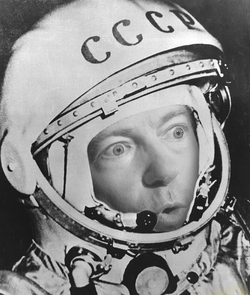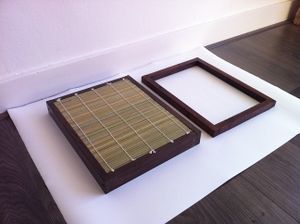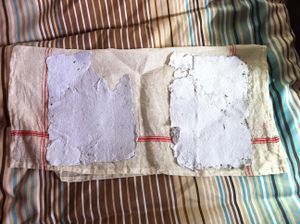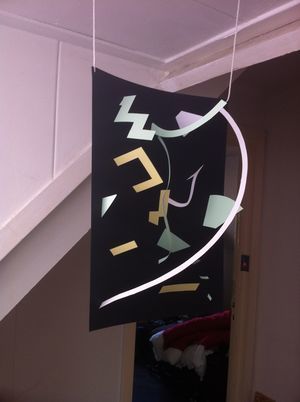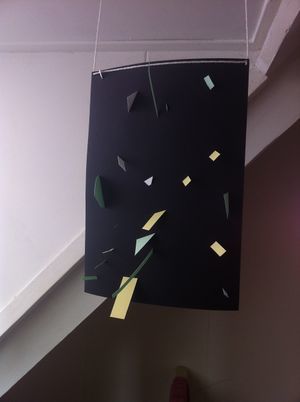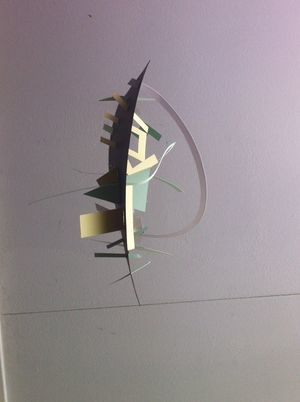Difference between revisions of "User:Max"
| Line 1: | Line 1: | ||
''Max Terpstra'' Illustratie | ''Max Terpstra'' Illustratie | ||
| − | email ''' | + | email '''0908471@hr.nl''' |
[[File:Spacebooty.png|250px ]] | [[File:Spacebooty.png|250px ]] | ||
Revision as of 09:23, 24 March 2017
Max Terpstra Illustratie
email 0908471@hr.nl
1 - Historical piece - Paper
The craft of paper making is an ancient craft that originated in China around 105 BC. The craft is based on turning water and natural products (consisting of wood scraps, rice, fibres and more), into a mixture that is called ‘pulp’. In the earliest way of papermaking the products would be beaten down with sticks to make it easier to combine with water, but later on mixers would take over this job. This pulp is then combined with water in a tub of water and using a deckle frame to form the sheets of pulp. After this process the sheets would be pressed to remove all water and dried, and used for many purposes.
So how would this be fusing? Well there is a critical part in the process that features fusing to make paper form and hold its form. That part is where the pulp is created. Combining raw materials, most likely other sorts of paper or natural products, with water turns it into a soft sloppy material used for papermaking, or known as pulp. On a fusing level this would be defined as: combining two or more entities to create a new whole. So because you need to combine water and these materials, it is seen, in my perspective, as fusing.
What impact this form of fusing made. It became possible to not only write on this material, it would also get rid of the older and less practical mediums ideas and notes could be written on. The creation of paper is an enormous invention, and the result of that is still here today.
First results:
The first two sheets of paper were very fragile to handle. The would almost break if you would hold them while they were still wet. This can (possible/hopefully) be adjusted by finding the best correlation between the amount of water and paper used to for the pulp. This time the pulp was very thick and wouldn't flatten out on the frame. Next time i'll try to use colour and adjust the amounts of water and paper and I will be trying to add other materials and maybe even shape the paper during the process of making it. This can be possible because the pulp is still adjustable during the process and it can alter the shape of the paper at the end.
The use of this manual paper making is also an option for the 'why i make' statement poster, although the frame is a4 size it will need 16 pairs of a4, with some extra for possible failure. This will be a very time consuming, difficult task and can result into a very fragile poster. An option would be to divide the poster into 4 and align them afterwards. The printed statement could be printed at the publication station using the Mimaki flatbed printer.
3 - Pushed to the limit - Collage
The most common form of collage is with cut-out pictures that were once in magazines, newspapers, adds and more. It's a process where these pictures are torn or cut out and collected. This collection of cut-out images is then put together again to form a new whole, also known as collage.
Collage is a interesting and different kind of art, because it can consist of multiple mediums to form an image. For example, it can consist of photographs, paint, glue, and many more materials. These materials are then 'fused' together. Collage is a form that also relies on composition. Anyone can place an image on top of another, or next to it, but that might not be appealing to its form altogether.
Switching back to the assignment of pushing it to the limit: Collage is work that is almost always done on a flat surface, it only fills in the space that it is placed on. Digging deeper on the topic of using space one can also use the material were the images are placed on as a sort of gate to let the objects go 'through' the material its placed on.
This takes collage to a whole new level, because it's now not only using one side of it's surface, but a whole 360 degrees spectrum to be viewed at. Not only the front of the object is now the centre of attention, but also the back, or even the sides, well heck, it could also be the view from beneath.
This way of collage breaks the boundery of using one side, there are now a million new ways of using a single a4 sheet to create collage.
The first results of the collage:
